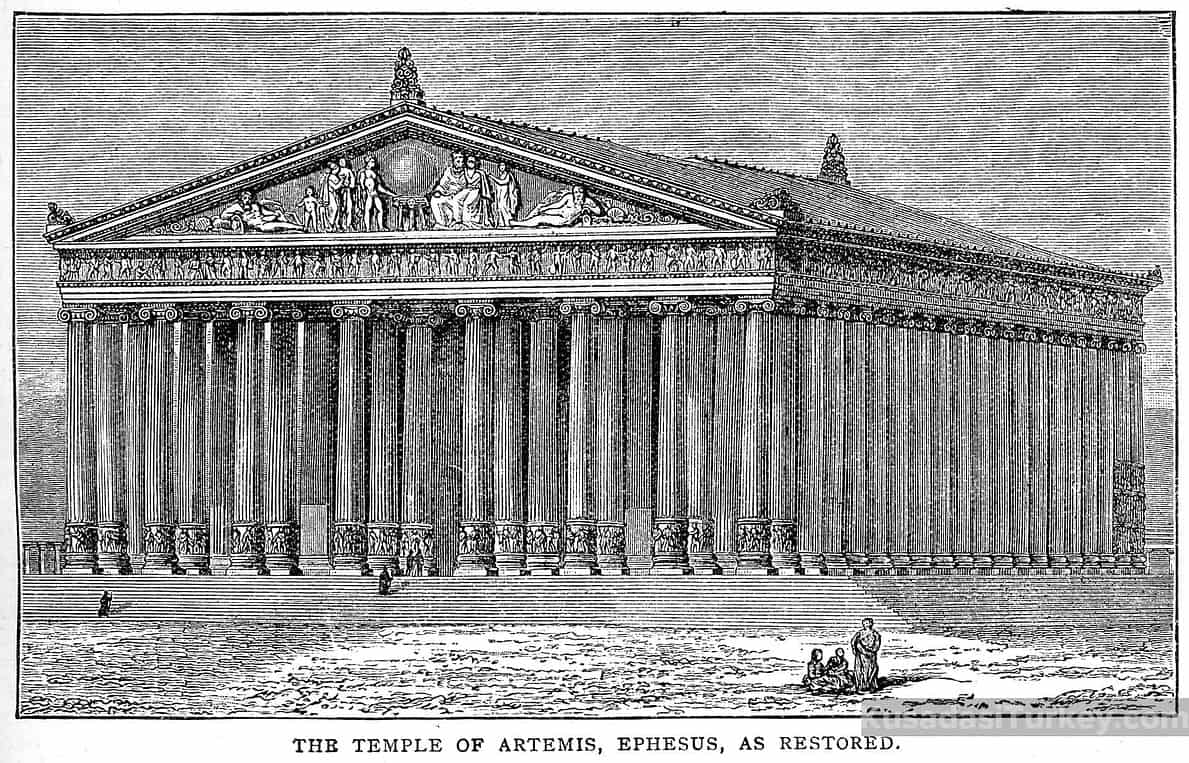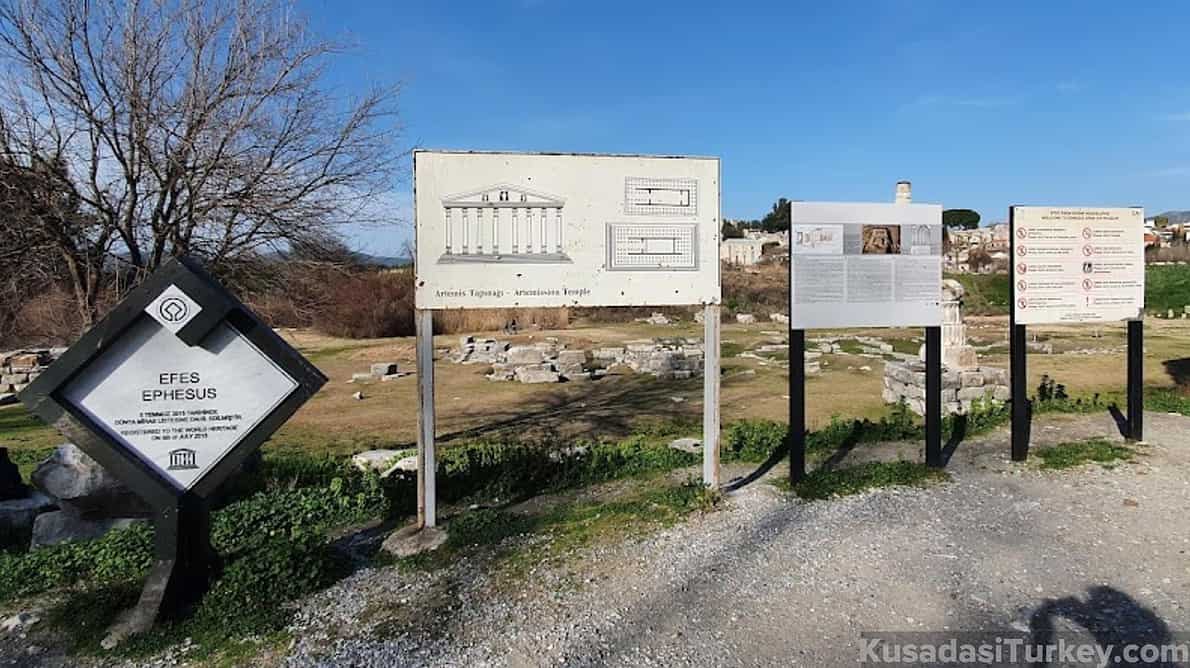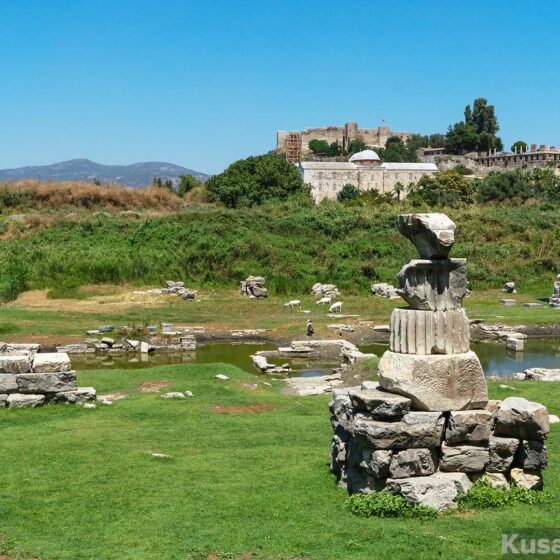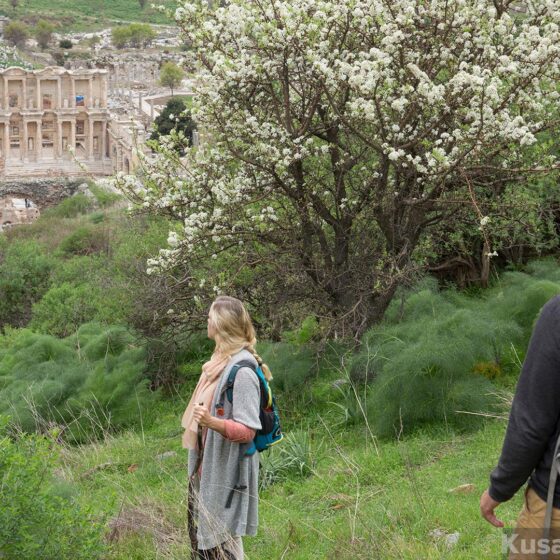Table of Contents Show
The Temple of Artemis one of the Seven Wonders of the Ancient World was more than a monument. It was a symbol of the divine dedicated to Artemis, the Greek goddess of the hunt, wilderness, wild animals, and childbirth. Its architectural and aesthetic grandeur was unparalleled, making it a gem among ancient structures.
No time to read? We've got you covered! Now, you can effortlessly absorb all the information from our articles while multitasking. Simply click 'play button' and let the stories of Kusadasi unfold before you, painting vivid images of history, culture, and beauty. Discover more, hands-free!

Temple of Artemis Location
Situated approximately 18 kilometres inland from the Aegean Sea, the Temple was nestled near the ancient city of Ephesus. The prosperous city of Kusadasi is an hour’s drive from this historical marvel, and from the serene coastal town of Bodrum, it’s approximately two hours away.
History
The Temple’s original foundation dates back to the Bronze Age. The first temple was destroyed by a flood, and a more imposing second structure rose in its place in the 7th century BCE. This temple was destroyed in an act of arson, leading to a third and even grander reconstruction.
The subsequent temple was four times larger than the Parthenon in Athens, showcasing the architectural prowess of the time.

The Foundation Deposit
Excavations at the site have revealed intriguing artefacts such as fragments of a statue believed to represent Artemis herself, bearing witness to the splendour that once graced these lands.
Temple of Artemis Reconstruction
Following the temple’s destruction by arson, the Ephesians demonstrated an indomitable spirit and resilience, resurrecting their beloved temple into a grand architectural masterpiece during the third phase of construction.
Influence and Devotion
The cult of Artemis, deeply woven into Ephesian society, was highly influential. Artistic renditions of the goddess found in the region, particularly the multi-breasted “Artemis of Ephesus” statue housed in the Ephesus Archaeological Museum, underscore the deep reverence the Ephesians had for Artemis and her temple.

Rediscovering Glory
Lost in time the Temple was rediscovered in the 19th century by British archaeologist John Turtle Wood. Excavations have led to the unearthing of ornate columns and statue fragments, offering a peek into the Temple’s erstwhile glory.
Experience Ephesus Firsthand
History comes alive on our private Ephesus tours, let our local experts guide you through the echoes of time, adding a personal touch to your visit to the Temple of Artemis.
Ephesus is much more than just a historical site – it’s a story that continues to unfold. Book your tour today and let history come alive.
Temple of Artemis on google maps
Last updated on February 10, 2024




